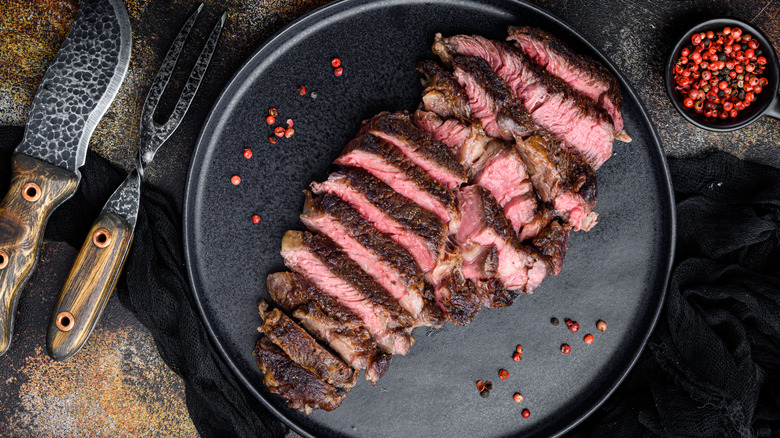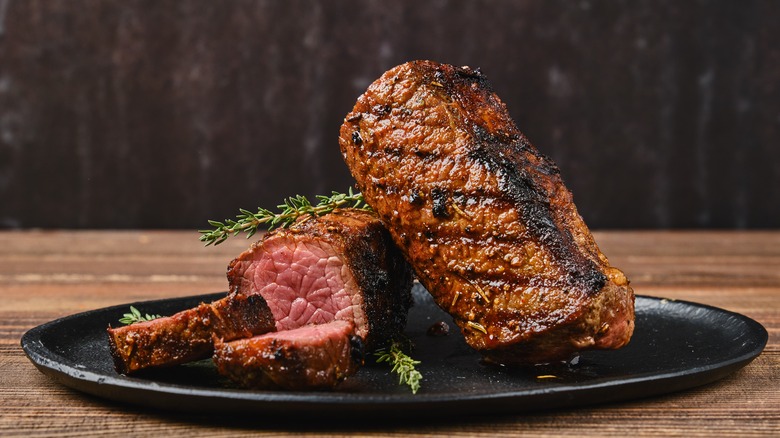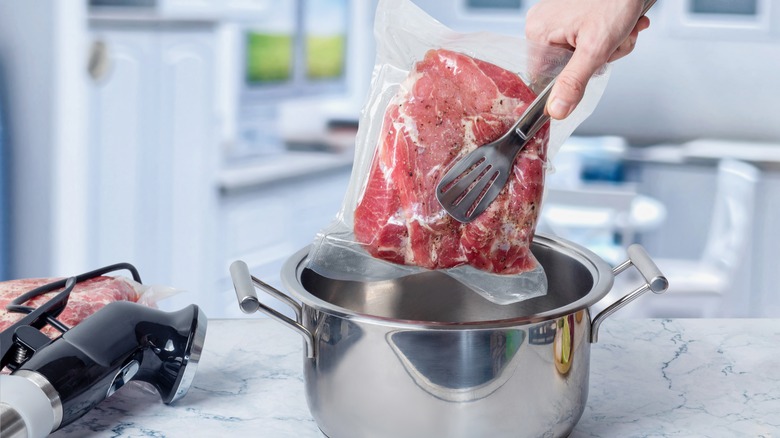The Steak Thickness Rule Professional Chefs Swear By At The Butcher
You don't have to be a professional chef to cook a beautiful steak, but that doesn't mean that doing so doesn't require some professional know-how. Steak seems like a low-fuss meal; just add plenty of seasoning and use a hot pan for a good sear, right? But if you think that's all there is to it, then you may be making crucial mistakes when cooking steak.
One common blunder occurs before you've even set foot in the kitchen: choosing a steak with the wrong thickness. Ideally, you want a steak that's 1.5 inches thick. This allows you to get good sear on the outside of your meat without overcooking the interior, which is much harder to achieve when you have a thinner cut of beef.
This is just one of the many reasons why it pays to buy meat from your local butcher. Their experience can help you avoid buying a cut that's too thin, and make sure that you're getting the best value for your money. While getting two thin steaks from the grocery store may seem like a good deal, you're better off with a single thick cut that will cook properly.
But that's not everything. Great Road Kitchen chef Chris Frothingham told Real Simple that there's another rule regarding thickness you need to keep in mind when shopping for steak at the butcher's or the grocery store.
Your steak's thickness should be as uniform as possible
It's important to make sure your steak's thickness is the same all the way through. According to Frothingham, an uneven steak is going to cook inconsistently. Even if most of the cut hits that 1.5-inch mark, it won't cook correctly if there's a half-inch difference between the edges and the center. Those edges are going to cook faster than the rest, giving their meat a different flavor and texture.
The easiest way to avoid uneven steaks is to skip the cheap cuts of meat. As Frothingham points out, steak is like anything else: You get what you pay for. Grocers and butchers often mark down uneven cuts precisely because they aren't going to cook as well.
Thick bands of fat also make your steak cook inconsistently. Fat tends to shrink more than the meat, and can make steak curl or buckle. An easy way to fix this is to score the fat band before cooking, thereby keeping the entire steak evenly pressed into the cooking surface.
What to do if your steak is uneven
If you can't afford the best cuts of steak, you don't have to settle for a low-quality dinner. A steak with an uneven surface can rival the best cuts of filet mignon — if you prepare it correctly.
On Reddit, several users recommended fixes for uneven steaks. One of the most common suggestions was to cook the meat using the the sous vide method. This involves vacuum-sealing food inside of a plastic bag, then submerging it in a heated bath of water. The water will distribute the heat evenly through the submerged steak. That way, the entire steak will cook at the same rate; finish it up with a quick sear to get that classic browned appearance.
The other method recommended by Reddit users was the reverse sear. This also relies on a gentle, even heat, but requires an oven instead of a sous vide device. The raw steak is cooked in the oven first, then seared in a pan. This way, the interior is evenly cooked, while the outside has a flavorful crust.


